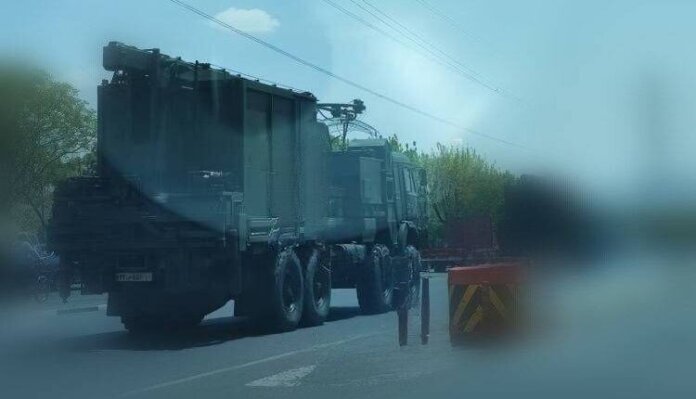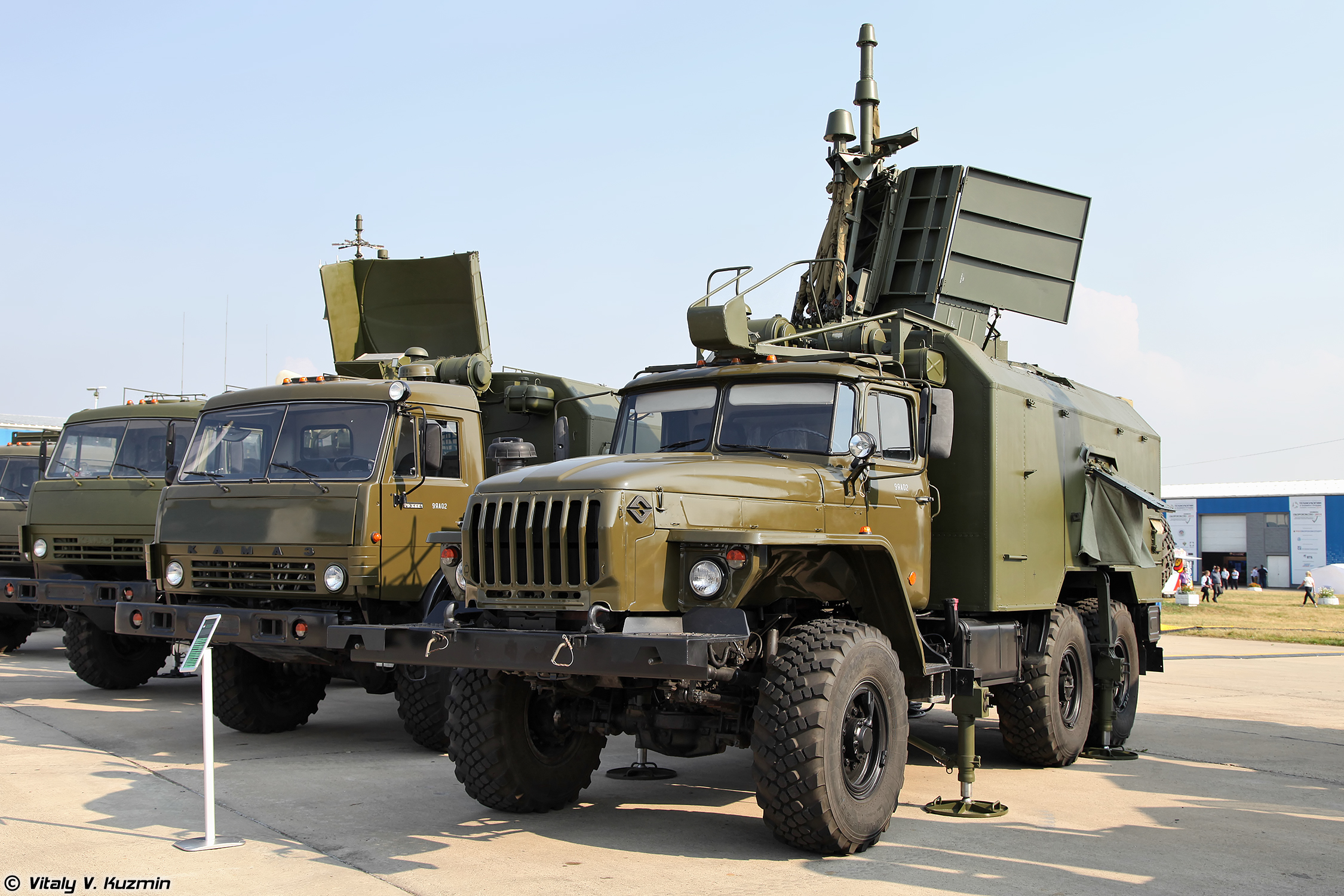
Last month, Armada published an article about what maybe an Iranian version of Russia’s 1RL257E Krasukha-4 ground-based Electronic Warfare (EW) system.
Information has since surfaced on social media disclosing that Tehran recently deployed Russian-supplied IL222M Avtobaza-M ground-based signals intelligence systems. Reports state that Iran may have received its first 1L222M examples in 2011. The kit was rumoured to have been involved in the Islamic Republic’s downing of a Lockheed Martin RQ-170 Sentinel Uninhabited Aerial Vehicle (UAV). The Central Intelligence Agency UAV was brought down in Iranian territory on 4th December 2011.
Avtobaza-M is designed to collect signals intelligence to support air defence by detecting, locating and identifying air threats via their electromagnetic emissions. Russian military documents seen by Armada say the IL222M detects and processes emissions on a 200 megahertz/MHz to 18 gigahertz/GHz waveband. Avtobaza-M will detect and process signals from Identification Friend or Foe (IFF) transponders equipping aircraft. These transponders usually squawk across wavebands of between one gigahertz/GHz to 1.21GHz. Aircraft Tactical Air Navigation (TACAN) emissions from 962MHz to 1.213MHz can be detected and processed by Avtobaza-M. Other key targets include emissions from Airborne Early Warning (AEW) aircraft. Specific targets include the Northrop Grumman AN/APY-1/2 S-band (2.3GHz to 2.5GHz/2.7GHz to 3.7GHz) and Lockheed Martin AN/APS-139 and AN/APS-145 very high frequency (400MHz to 450MHz) AEW radars equipping Boeing E-3 Sentry and Northrop Grumman E-2 Hawkeye series aircraft respectively.
The 1L222M detects signals with a minimum strength of -88 decibels-per-watt. Direction-finding of emitters of interest are determined with between 0.4- and one-degree of accuracy. The documents continue that targets can be determined at ranges of 81 nautical miles/nm (150 kilometres/km) to 108nm (200km). Avtobaza-M shares data on target azimuth and elevation angle, radar type (pulse-Doppler and/or continuous wave) and emission waveform. Up to 60 targets can be detected and processed by the system at any one time. Target detection is done using a rotating antenna making either six or twelve revolutions-per-minute. The IL222M consumes twelve kilowatts of electricity.
Architecture
The system’s architecture includes one information processing station, and four detection and direction-finding stations. The entire system is deployed on two vehicles, networking is facilitated with a two-way fibre optic link carrying data at a rate of 1.2 kilobits-per-second. Target information (target angle, azimuth and elevation) is displayed on the operator’s console. Other parameters like signal carrier frequency and pulse duration are also displayed. Avtobaza-M’s human-machine interface is highly customisable by the operator with particulars regarding taboo frequencies, and specific search sectors and/or off-limits areas easy to arrange. The system has a crew of four.
Concepts of operations
Air targets can be detected and processed via their emissions providing at bearing information relative to the system’s location. Once this information is determined, it can be shared with ground-based air defences to advice the latter on a target’s possible ingress vectors. Likewise, this data can be shared with fighter controllers to direct combat aircraft to perform interceptions. Given the IL222M’s range, one should consider it an ostensibly tactical and/or operational asset which supports battlefield air defence.
It is likely the Iranian military deploys the Avtobaza-M not only to support battlefield air defence but also to help protect strategic point targets. One key tactical consideration is that emissions control could hamper the system’s utility. Combat aircraft routinely go ‘electromagnetically dark’ when flying in contested airspace, although the 1L222M could help prosecute targets exhibiting lax radio discipline. Similarly, target coordinates derived by the equipment could assist the direction of electronic attack by systems like the Krasukha-4. The documents add that Avtobaza-M supports littoral operations by detecting line-of-sight emissions from naval surveillance radars.
On 13th April Iran mounted a large-scale attack on Israel involving circa 300 surface-to-surface ballistic and cruise missiles, and UAVs. According to the Israeli Ministry of Defence, 99 percent of these threats were engaged and destroyed by American, British, French, Israeli and Jordanian electronic and kinetic effects. This engagement was assisted with sensor and communications provision from these, and other unnamed, allied nations.
Systems like the 1L222M are important capabilities for Iran. As a force protection asset, they provide a means by which the Islamic Republic can protect key strategic targets from air-to-surface attack. Avtobaza-M can also be a useful force protection asset on the battlefield. Allied nations need to be cognisant of such capabilities and ensure that systems like 1L222M are high priority targets during any future showdown with the Islamic Republic.

by Dr. Thomas Withington












